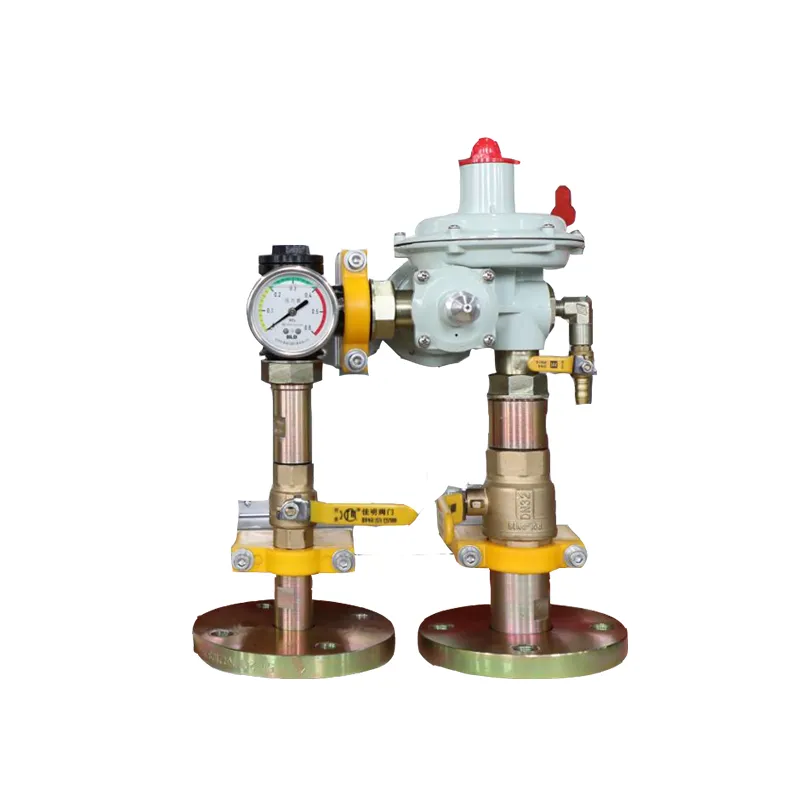
Oct . 07, 2024 22:59
Back to list
safety relief valve
Understanding Safety Relief Valves Essential Components for Pressure Management
Safety relief valves are critical devices used in various industries to protect equipment from overpressure situations. These valves play a vital role in ensuring safety by automatically releasing excess pressure from pressurized systems, thereby preventing catastrophic failures that could lead to explosions, equipment damage, or even loss of life. In this article, we will explore the functionalities, applications, and importance of safety relief valves in industrial settings.
What is a Safety Relief Valve?
A safety relief valve is a mechanical device designed to open automatically when the pressure in a system exceeds a predetermined limit. The primary function of this valve is to release excess pressure, thus maintaining safe operating conditions. The design of safety relief valves typically incorporates a spring mechanism that holds the valve in a closed position under normal operating conditions. When pressure builds up beyond the safe threshold, the spring is compressed, allowing the valve to open and relieve the pressure.
Types of Safety Relief Valves
There are two main types of safety relief valves safety valves and relief valves. Safety valves are generally used for gases and vapors and are designed to open quickly and fully when pressure reaches a set point. They are particularly common in steam applications and gas pipelines. On the other hand, relief valves are typically used for liquids and may open gradually as pressure increases. Both types of valves serve the same fundamental purpose but are suited to different applications and operating conditions.
Applications of Safety Relief Valves
safety relief valve

Safety relief valves are used across a wide range of industries including oil and gas, chemical processing, pharmaceuticals, and food and beverage production. In the oil and gas industry, for instance, these valves are essential for managing the pressures associated with drilling and extraction processes. In chemical plants, safety relief valves prevent dangerous pressure build-up in reactors or storage tanks, which could result in hazardous leaks or explosions.
In the pharmaceutical industry, the integrity of production processes is paramount, and safety relief valves ensure that pressure is kept within safe limits to avoid contamination or spoilage. Food and beverage production also relies on these valves to maintain hygienic conditions and prevent spoilage due to pressure fluctuations.
Importance of Regular Maintenance
While safety relief valves are designed to function automatically, their reliability is crucial for the safety of operations. Regular maintenance and testing of these valves are essential to ensure they operate correctly when needed. Operators are advised to follow manufacturer guidelines for inspection schedules, and any signs of wear or malfunction should be addressed immediately.
Conclusion
In summary, safety relief valves are indispensable components of pressure management systems across various industries. Their ability to automatically relieve excess pressure protects both equipment and human lives from the hazards associated with overpressure situations. Understanding their functioning, applications, and the necessity for maintenance can help organizations enhance safety protocols and ensure efficient operations. By prioritizing the maintenance of safety relief valves, industries can safeguard their operations while promoting a culture of safety and responsibility.
Latest news
-
Safety Valve Spring-Loaded Design Overpressure ProtectionNewsJul.25,2025
-
Precision Voltage Regulator AC5 Accuracy Grade PerformanceNewsJul.25,2025
-
Natural Gas Pressure Regulating Skid Industrial Pipeline ApplicationsNewsJul.25,2025
-
Natural Gas Filter Stainless Steel Mesh Element DesignNewsJul.25,2025
-
Gas Pressure Regulator Valve Direct-Acting Spring-Loaded DesignNewsJul.25,2025
-
Decompression Equipment Multi-Stage Heat Exchange System DesignNewsJul.25,2025

